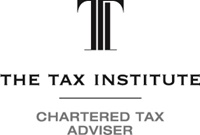E-Mail: auditor@aust-smsf-audits.net.au
Australian SMSF Audits is a registered business of Eric J Taylor, ABN 76 114 458 058.
Liability limited by a scheme approved under Professional Standards Legislation.
DISCLAIMER: Refer to the Website & Email page on this website.
Duis autem vel eum iriure dolor in hendrerit in vulputate velit esse molestie consequat, vel illum dolore eu feugiat nulla facilisis at vero et accumsan et iusto odio dignissim qui blandit praesent luptatum zzril delenit augue duis dolore te feugait nulla facilisi. Nam liber tempor cum soluta nobis eleifend option congue nihil imperdiet doming id quod mazim placerat facer possim assum. Lorem ipsum dolor sit amet, consectetuer adipiscing elit, sed diam nonummy nibh euismod tincidunt ut laoreet dolore magna aliquam erat volutpat. Duis autem vel eum iriure dolor in hendrerit in vulputate velit esse molestie consequat, vel illum dolore eu feugiat nulla facilisis at vero et accumsan et iusto odio dignissim qui blandit praesent luptatum zzril delenit augue duis dolore te feugait nulla facilisi. Nam liber tempor cum soluta nobis eleifend option congue nihil imperdiet doming id quod mazim placerat facer possim assum. Lorem ipsum dolor sit amet, consectetuer adipiscing elit, sed diam nonummy nibh euismod tincidunt ut laoreet dolore magna aliquam erat volutpat.
What does an auditor look at in an investment strategy?
Firstly, why does a fund have an investment strategy and what does it mean. It is a requirement of the SISA that every self-managed superannuation fund must have an investment strategy and that the strategy must be reviewed rgularly and a least annually. Further, SISA r.4.09 requires every investment strategy to consider 5 particlular matters. The ATO has also stated that any breach of r.4.09 is a reportable breach of the SISA and an auditor is required to lodge an Auditor Contravention Report where such a breach occurs. It is also a requirement that SMSFs invest in accordance with their investments strategy. Failure to do so may place the trustee in breach of SISA s.55.
What is a strategy? If one referece to the Oxford dictionary, one will read that a strategy is "a plan that is intended to achieve a particular purpose". If a plan is too vague, how can it be followed to achieve that goal. In recent years, it has been noted that investments strategies have come to include a wide selection of asset classes with investment ranges of 0% to 100%. The ATO has stated that such open statements is not a strategy. In my opinion, a strategy should only include asset classes that the trustee does intend to invest in and if the trustee includes an investment range, those ranges should be reasonable and show how the trustees plan to invest. It should be noted that the SISA does not require investment ranges.
In February 2020, the ATO issued a guidance paper on how they believe trustees should view their investment strategy, being QC 23320. All trustees shoud be aware of this guidance paper.
When an auditor is reviewing, they will consider 2 matters. Does the stratgey comply with r.4.09 and are the investments in accordance with the strategy. Reg. 4.09 requires the strategy to include these 5 matters:
The risks involved in holding any particular asset. This will include the risk of loss of asset value and the risk of loss of anticipated income;
The composition of the fund's investments as a whole, including the risk of inadequate diversification. This is an area that the ATO has recently raised, with concerns that strategies doe not adequately consider. It should be noted that there is no requirement for a fund to have a diversification of assets, but where a fund lacks diversification, the strategy should address why. This will include where trustees decide to have multiple investments within a single asset class, the strategy must explain why, such as the trustees believing that diversification within the single asset class can achieve the required outcome.
The liquidity of investments. The trustee should include consideration of how assets can be converted to cash if required. This can be particularly relevant where a fund has a single or few large investments.
The ability to discharge existing and prospective liabilities. Existing is easy to explain, being matters like pension or loan payments. Prospective is a more subdued area. This may include a payout should a member die. As an example, where a fund has multiple members, but a single asset (such as real property), and one member passes away, how will the fund pay out that member benefit. It must be paid within a reasonable time.
Whether the fund should hold a contract of insurance for a member.
The investment strategy is not just another piece of paper to file. It is a forward looking plan of where the trustees are heading.






Home.
About Investment Strategies.



